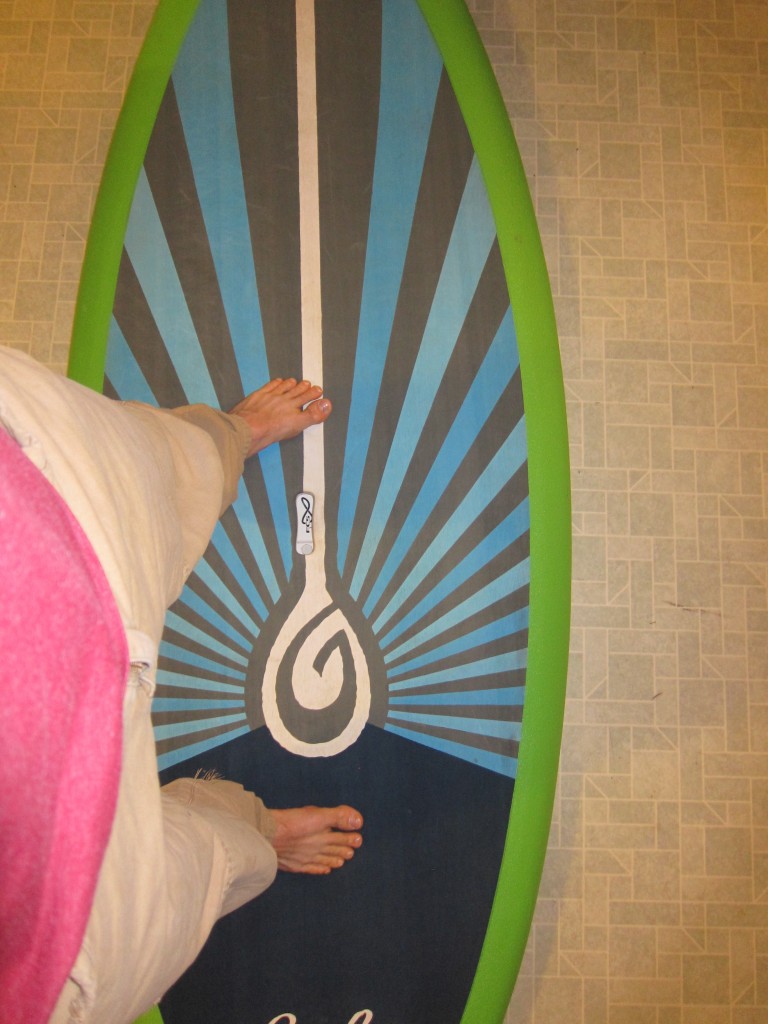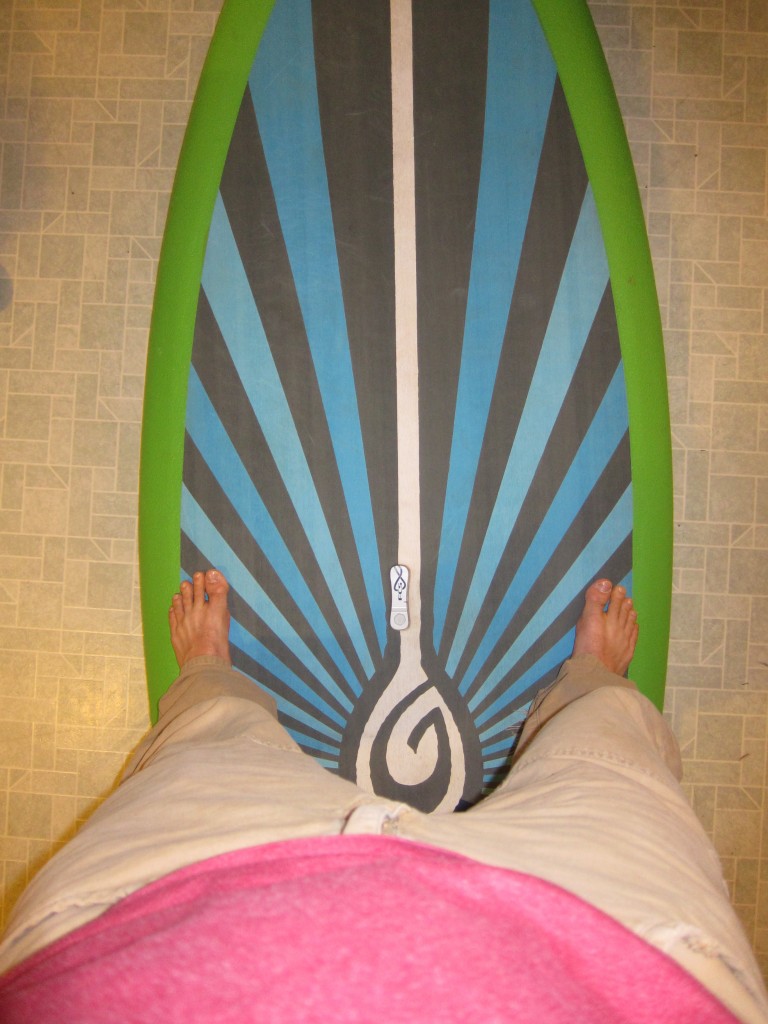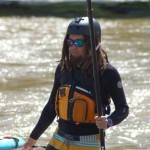This is the fourth post in a multi-post tutorial on how to get started SUP river surfing. Checkout the other posts as well:
- Part 1: The Gear
- Part 2: Scoping out the wave
- Part 3: Plotting a course onto the wave
- Part 4: Padding stances to catch the wave
- Part 5: Paddle strokes to catch the wave
- Part 6: Stances and footwork for surfing the wave
- Part 7: Paddle strokes and braces for surfing the wave
Thus far the information in previous posts have been common river knowledge. Any kayaker, rafter, or river enthusiast would be an expert on that stuff. In this post I’m going to start to get into SUP specific techniques. So if you’re a kayaker that wants to get into river SUP surfing, now is the time to start paying attention.
In this post I’m going to talk about stances and footwork for catching river waves. Let’s start by defining a couple of important stances that you’ll use.
Surf Stance
This is your typical surfer stance: one foot in front of the other with your body turned sideways in relationship to the board.
Neutral Stance
This is the basic flat water SUP stance. Feet side-by-side on the board, body facing forward.
Both of these stances are needed in order to catch a river wave. The basic idea is to paddle up the eddy to the wave using a neutral stance, then jump into a surf stance as you cross the eddy line and move onto the face of the wave. Here’s Erin demonstrating at Pueblo’s 3rd wave:
Why the switch in stances? Let’s explore the pros and cons of each stance to understand why.
A neutral stance provides the best balance when paddling on flat water. Paddle boards are most unstable side to side, so having the widest possible stance will give you the most stability and control. When it comes to paddle options, the neutral stance allows you to paddle on either side of your board equally well. The stance also allows you to make strong paddle strokes. Stability, strong strokes, and having the option to paddle on either side of your board are all needed when paddling in the eddy toward the wave.
The neutral stance stops being effective once you need to control the nose of your board or are paddling over waves or through rough water. This is important because once on the wave you will need to simultaneously keep the nose of your board from pearling (going underwater) while keeping it as close to the surface of the wave as possible. Using a neutral stance to do this is very ineffective.
A surf stance allows you to control the nose of your board. If the nose of the board is pearling, put weight on your back foot to raise the nose. If you nose is too high and you are getting pushed downstream off the wave, put more weight on your front foot. Here’s Erin again, making adjustments by shifting her weight between her front and back foot:
For flat water paddling however, a surf stance is often unstable. This is because your feet are in line with the axis of the greatest instability of your board. While paddling in the eddy, it can be very difficult to balance on a board using a surf stance.
Fins also play a major factor when it comes to side to side stability. The one thing to keep in mind is that fins are only effective when water is moving over them. In other words if you are on a lake and not moving, fins provide very little additional stability. Once you start paddling however, those fins start working and will help provide the additional stability.
The same applies to river surfing. While you are in the eddy your fins don’t help much, but once you cross the eddy line and are on the wave with lots of water flowing over the fins, you will instantly get extra stability. This is one reason surf stance will feel very unstable while in the eddy, but once you are on the wave surfing you will find it easier to balance.
Now that you know the stances, move to the back of the eddy (at least far enough back to get four paddle strokes in before reaching the wave). Start in neutral stance paddling toward the wave using the best path you’ve picked out. At the last second, before your board reaches the wave, jump into surf stance.
This transition has to be a jump. If you attempt to make two steps to shuffle your feet, you will end up putting too much weight on one side of the board and falling off. This jump takes practice, but once dialed is not very difficult.
If you jump into surf stance too soon, you’ll often fall in the eddy before making it to the wave. If you jump too late, your board will knock you off as it slides onto the wave throwing you off balance. The timing is important and will often depend on the particular wave you are surfing. Pay attention to when and how you are falling and make adjustments.
A mistake I see a lot of beginner river surfers make is to try to paddle onto the wave using only a surf stance. Often they struggle and fall off before even making it to the wave. Surf stance is important when you’re ON the wave, but when you’re paddling TO the wave its better to stay in a neutral stance. It’s not impossible to catch river waves by paddling onto them in surf stance (in fact, some people recommend catching river waves that way), but I find it’s usually harder. As you progress and build better balance, you can try paddling the whole way onto the wave using surf stance.
Once you make the jump and transition your stance, you (hopefully) will be on the wave surfing! I’ll talk more about what to do once you’re on the wave in a later post. For now, practice paddling in a neutral stance and jumping into surf stance!
Click here to read Part 5: paddle stokes to catch the wave.



